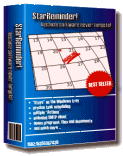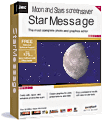Going from Windows to MAC OS X
After 20 years of using Windows computers, I bought a MACbook and started my experience in this brave new world.
For other people thinking to make this jump, I am warning them with my findings.
Positives of MAC.
Timemachine.
The backup program of mac os x.
You start timemachine, plug an external USB hard disk. Timemachine will ask you to format it and use it as your backups destination disk.
When ever in the future you plug in again that USB disk, a backup procedure automatically begins. Very convenient. I haven't tried to restore though, up to now to see if it actually works.
You also have to define the "exclude" folders, so you do not create huge backups of file you don't care about.
Multitouch.
Scrolling pages with two fingers.
Application packages.
Having the whole application packaged in a single "file". Uninstalling is done by simply draging the application to the trash bin.
Avoids all the microsoft mesh with common files, dlls, and spreading the files of one applications in 100 different folders.
Well done MAC team !
Good for show-off.
If you are of those persons that like to show-off, Mac can help you in that.
Negatives of MAC.
Price
The macbook price is about the double of a windows laptop with the same characteristics.
AppStore
Apple's AppStore is very nice to use but has a limitted variety of 3rd party software.
In windows you can find a huge amount of software that allows you to do prety much everything and for free. In AppStore most of the apps are paid apps.
For example, if you want an FTP client, there is no decent free solution in the AppStore. In windows you have 10's of excellent free solutions.
For example filezilla is not part of the AppStore and you have to search it and install it separatelly.
See other examples of AppStore shortages in software titles, here
http://www.24hsoftware.com/best-free-macosx-software-not-in-appstore
Missing important keyboard keys (on MacBook)
There are no DELETE, Page Up, Page Down, Home, End
keys on the keyboard.
Example: If the cursor is in the middle of a sentence and you want to delete all the characters in this line, up to the cursor.
On windows:
CTRL+Home, Del
On MAC:
CTRL+SHIFT+LeftArrow, CTRL+Backspace
You see, on MAC you will need 3 fingers. This gets even more complicated in you are a professional editor and you write quickly.
Information on mouse over
On windows when you hover the mouse over a folder, a tip shows the total size of the folder and other useful information.
On MAC, you see no extra information.
You have to select the folder, press CTRL+i and then a new window opens. That window still does not say the total size of the folder.
You also have to close the window, to arrive to where you where.
(On windows you achieve all these by parking the mouse over the folder.)
Folder tree view is missing
In windows explorer, you see the folder structure, even with many levels of subfolders on the left pane.
I could not find a similar view on MAC. On MAC you get the feeling the operating system thinks you are dump and you could not handle all this information.
Price
Folders are shown alphabetically among files. In windows you always have the folders listed before the files. This allows you to quickly navigate to a deeper subfolder structure without having to scroll the whole list of files to see what folders are spread among the files.
Many settings dialogs do not have a Cancel button
Example: System preferences -> Network -> edit locations
If you start to edit and after a few changes you want to cancel what you did, you have only the "Done" button. No way to undo a mistake, or undo your changes if you are not sure about them.
No way to immediatelly delete a file without passing through the trash bin.
If you have a big movie file that you want to completely delete to gain hard disk space, in windows you do a Control+Delete. This deletes the file without putting it in the recyrcle bin.
In Mac you can only send it to trash can, and then you have to empty the whole trash can. This will completely delete other files that you might not be ready to delete.
A free solution can be found here:
http://superuser.com/questions/10676/permanently-deleting-files-on-mac-os
Deleting files on external hard disks (e.g. USB flash drive) also puts them in the trash.
When the file is put on trash, no hard disk space is gained. Again, you need to empty the whole trash can instead of the specific file.
You loose all your local drives trash can just because you wanted to completely delete a file on a USB stick.
Isn't that ridicullus for an operating system that claims to be the best of all operating systems?
Preinstalled Safari
Safari internet browser comes preinstalled with OS X, but is still not as good as Firefox. For example it cannot print only the selected text from a page (v5.0.1). It neither has the rich collection of add-ins as Firefox has.
Even if you install firefox so that you do not use Safari, it will still bother you with the automatic downloading of its security updates, that take up space and increase the size of the backups).
- Login to post comments



Comments
How to uninstall safari from MAC OS X
Backup your system.
Make sure Safari is not running.
Right click (or control-click) the icon of Safari on the dock.
Select "Open in finder"
You will see the Safari application package.
Move it to trash
You might also want to remove
a) ~/Library/Preferences/com.apple.Safari.plist
b) ~/Library/Safari
c) ~/Library/caches/metadata/Safari
Your bookmarks are stored in (b) or in (c) depending on your MAC OS version.
If you need your bookmarks, import them first to Firefox before delete them.
It's easy to uninstall
It's easy to uninstall Safari 5. Just trash it.
However, you can't remove all the WebKit components that it uses, since they're needed for iTunes, Mail, and maybe other things.
After removing safari, iTunes stopped working. I had to re-download them and reinstall iTunes.